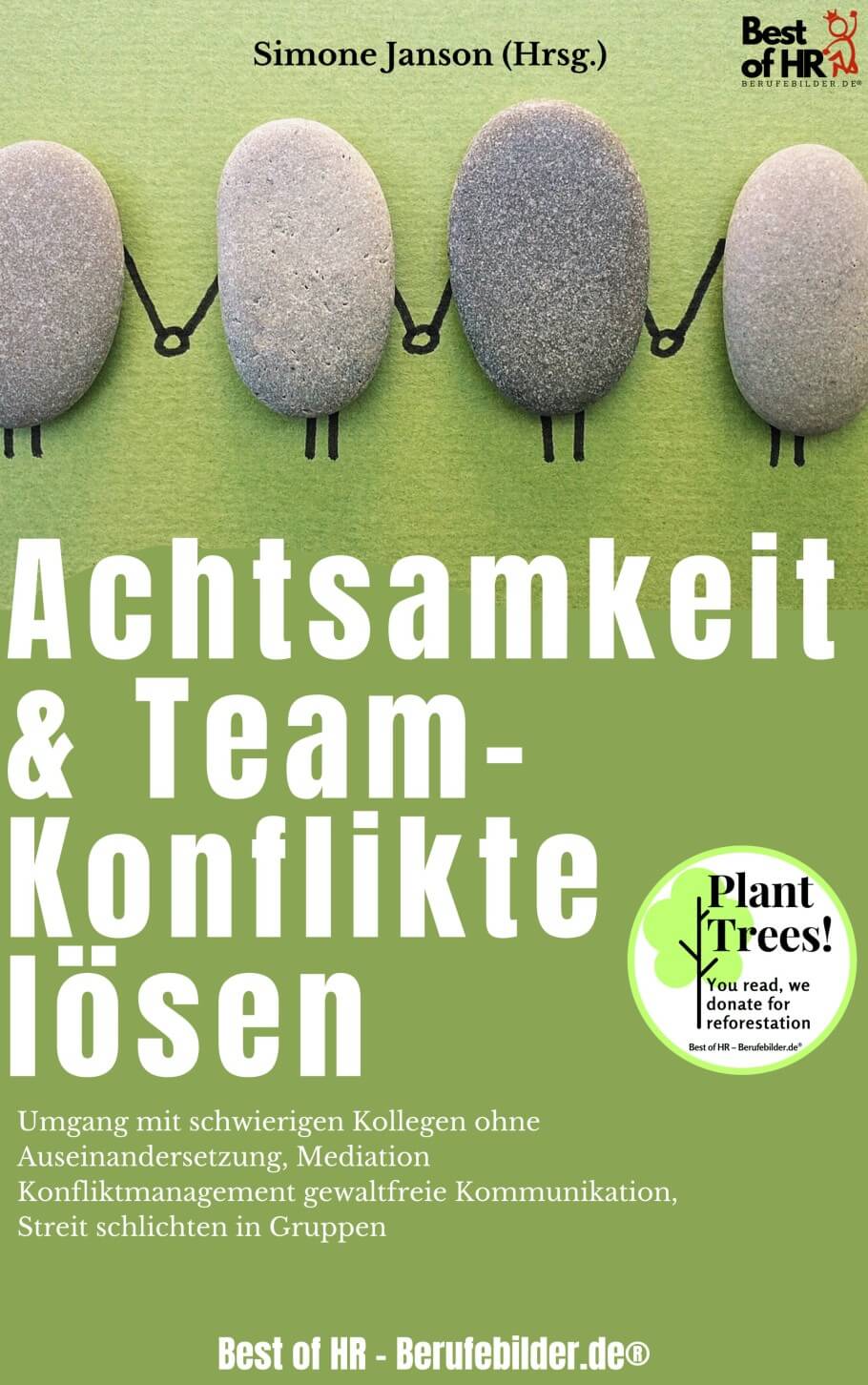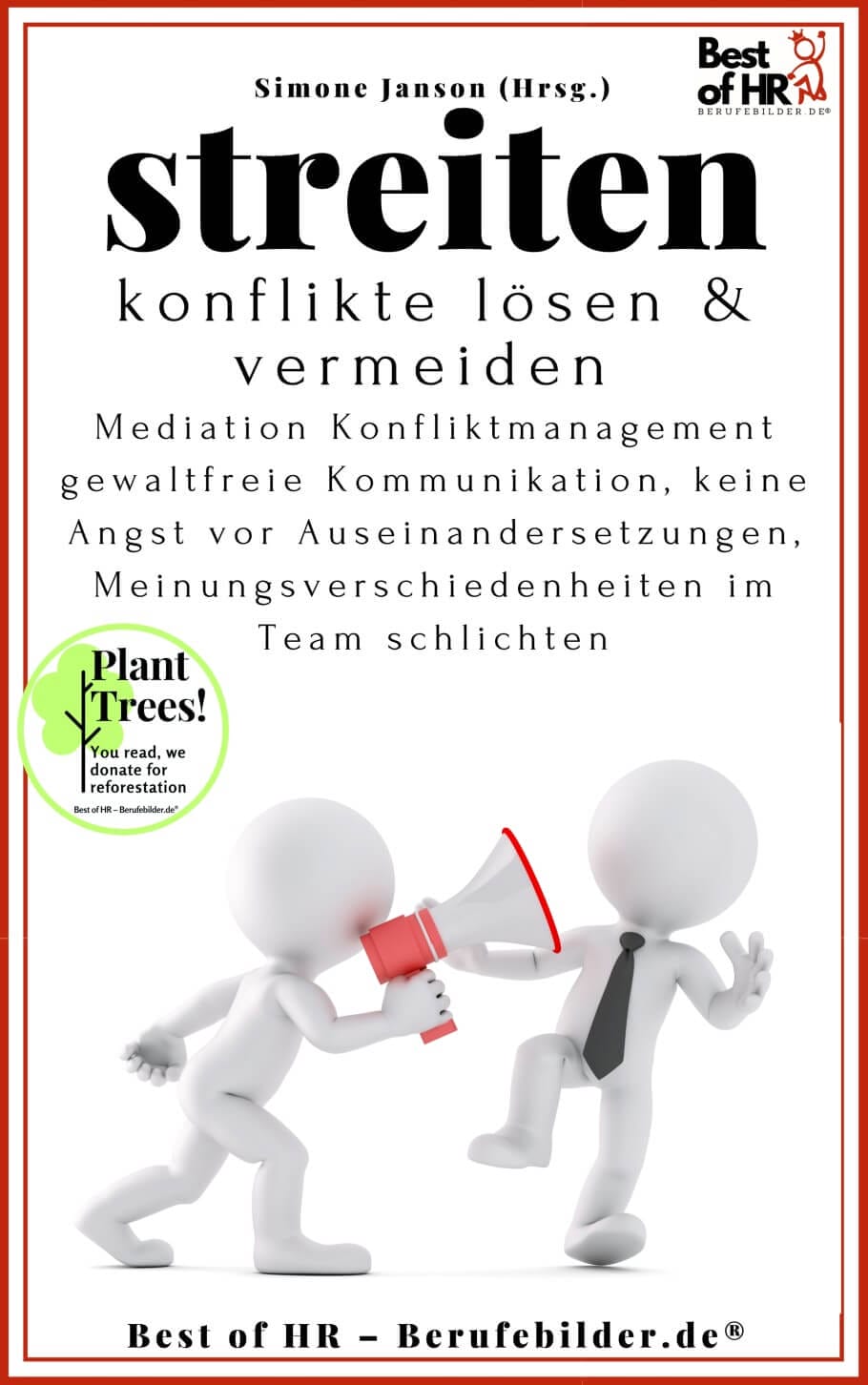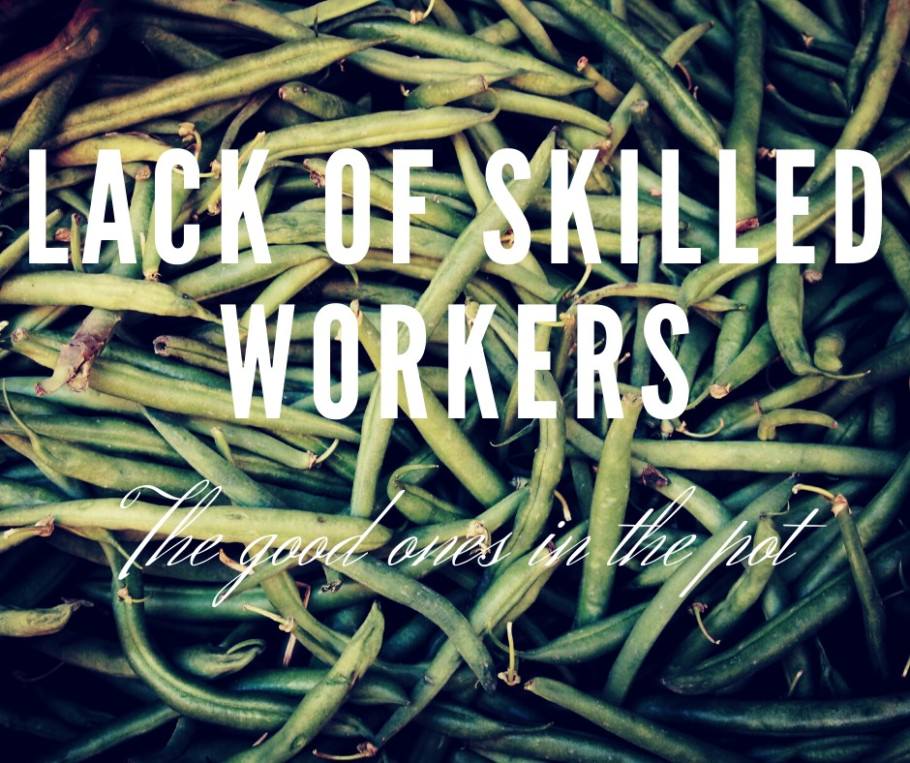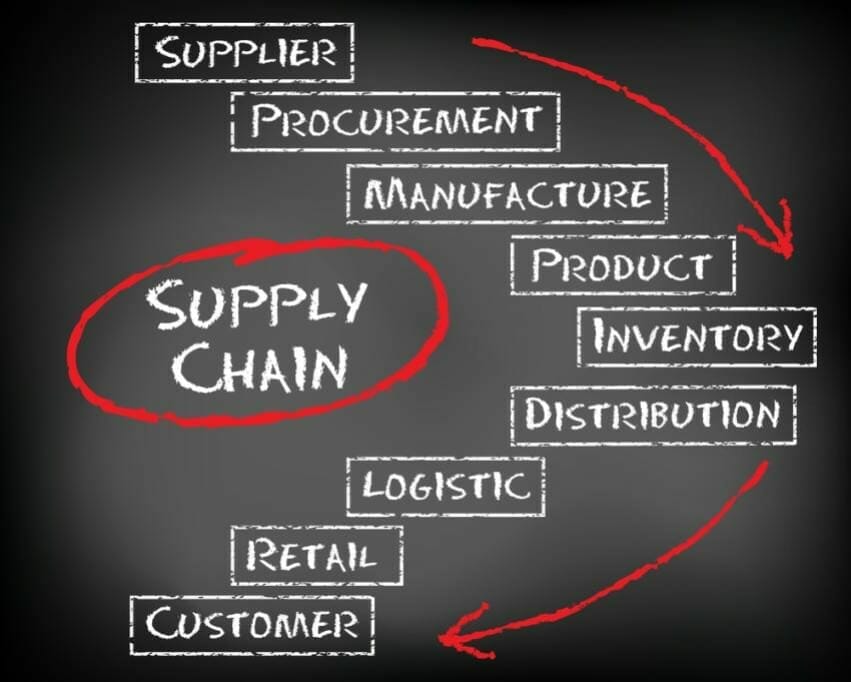For their successful, good life Information you really need: Government-funded publisher, awarded the Global Business Award as Publisher of the Year: Books, Shops, data-driven AI-Services. Print and online publications as well as the latest technology go hand in hand - with over 20 years of experience, partners like this Federal Ministry of Education, customers like Samsung, DELL, Telekom or universities. behind it Simone Janson, referenced in ARD, FAZ, ZEIT, WELT, Wikipedia.
Disclosure & Copyright: Our articles are written and edited by humans, and in some cases like this, we use the assistance of artificial intelligence to optimize texts. Image material created as part of a free cooperation with Shutterstock.
De-escalation in the office: Resolve conflicts as a team & turn enemies into allies in 7 steps
By Simone Janson (More) • Last updated on October 02.04.2024, XNUMX • First published on 21.01.2024/XNUMX/XNUMX • So far 5589 readers, 5353 social media shares Likes & Reviews (5 / 5) • Read & write comments
Senseless conflicts paralyze productive and creative work. This means you can use de-escalationStrategies enemies become friends.

- Break apart - what do politics and working life have to do with each other?
- How do you optimally address conflicts?
- Recognize and understand role patterns and personalities in the team
- Pressure from bosses or customers: Understanding external influences on conflicts
- Recognize the conflict dynamics and promote empathy
- Successfully tackle problems and resolve conflicts
- 7 structured steps on the way to conflict resolution
- Conclusion: De-escalation can only be achieved through courageous action
- Top books on the subject
- Read text as PDF
- Advice on success, goal achievement or marketing
- Book eCourse on Demand
- Skate eBook as desired
Break apart - what do politics and working life have to do with each other?
I recently read “Disaffect yourselves” as a call. What was meant in this context for major world politics can, however, also be applied to the microclimate Workplace transmitted. Because in many too Companies and actually anywhere People come together, it's ultimately about politics.
Unfortunately, in today's business world, workplace conflict is all too common and can be a significant barrier to effective work Teamwork represent. But when healthy competition turns into hostility, it can not only affect productivity, but also poison the working atmosphere and negatively impact employee well-being. That's why it's crucial Significance, the Art to master de-escalation in order to turn enemies into allies and a positive Promote team dynamics.
How do you optimally address conflicts?
The books on the subject (advertising)
The first major step to de-escalation is to identify and understand the causes of hostilities. They often arise from complex dynamics that can be based on personal conflicts, different work styles or even power structures within the team. It requires thorough analysis and sensitivity to understand the underlying motivations and needs to be recognized and targeted Measures to take action to overcome hostility.
The first step to de-escalation requires thorough analysis and a deep understanding of the causes of hostility within the team. Hostilities can arise for a variety of reasons and are often the result of complex social, emotional and organizational dynamics.
Recognize and understand role patterns and personalities in the team
In this context, it is important to consider the individual personalities and behaviors of team members. Some people may have a natural tendency toward conflict or difficulty dealing with stressful situations, while others may exhibit certain behaviors based on past experiences or personal values. A deeper understanding of individual motivations and needs can help identify the underlying causes of conflict.
In addition, structural and organizational factors can also play a role. For example, an unclear distribution of roles, insufficient resources or an unclear Communication lead to frustration and misunderstandings that ultimately fuel hostilities within the team. It is important to have these systemic Problems to identify and address long-term Solutions a DAK Bungalow.
Pressure from bosses or customers: Understanding external influences on conflicts
Discounts for your success (advertising)!
External influences such as pressure from above, economic uncertainties or unresolved conflicts between other teams or departments can also contribute to hostility within the team. It is important to recognize these external influences and understand how they affect team dynamics in order to take appropriate de-escalation measures.
Finally, it is crucial to acknowledge and understand the emotional dimension of conflict. Hostilities are often the result of hurt feelings, unmet needs, or unresolved conflicts from the past. A sensitive and empathetic approach can help recognize and address the emotional needs of team members to promote constructive handling of conflict.
Recognize the conflict dynamics and promote empathy
Identifying and understanding the causes of hostilities requires a wide range of skills, including analytical thinking, interpersonal sensitivity and emotional Intelligence. It requires thorough and continuous reflection on team dynamics and a Commitment for a positive and constructive working environment. By understanding and addressing the underlying causes of hostilities, one can pave the way for successful de-escalation and greater cooperation within Team pave.
A central aspect of de-escalation is therefore promoting empathy and understanding within the team. By making an effort to take the other person's perspective and understand their feelings and needs, bridges of understanding can be built and shared Set be identified. It takes time and patience to create an atmosphere of trust and openness in which all team members feel comfortable for sure feelto express their opinions and concerns.
Successfully tackle problems and resolve conflicts
Conflicts should not be avoided, but rather actively addressed. They offer an opportunity for growth and development if they constructive be solved. By approaching conflicts courageously and openly and looking for common solutions, obstacles can be overcome Trust and strengthen team collaboration. It requires strong communication and leadership skills to ensure that everyone involved is heard and their needs are taken seriously. Two things are important for this:
Promote an open conflict culture in the company
A culture in which conflicts are actively addressed requires a rethink in the perception of conflict. Instead of viewing them as an unavoidable evil, they should be seen as an opportunity for growth and development. This requires a cultural change led by leaders and supported by all team members. By fostering an open conflict culture where conflict is viewed as a normal and acceptable part of work life, obstacles can be overcome and team trust and collaboration can be strengthened.
Investing in conflict resolution skills
About conflicts successfully To cope, it is crucial to invest in developing conflict resolution skills invest. This includes training all team members in the areas of communication, conflict management and negotiation techniques. By strengthening the skills and confidence of all team members in dealing with conflict, they can better respond to conflicts and resolve them constructively. This requires long-term commitment and continuous development of the skills of all team members in order to establish a positive and productive conflict culture.
7 structured steps on the way to conflict resolution
Actively dealing with conflicts requires a targeted and structured approach to ensure that they are resolved constructively and do not escalate further. Here are some stepsthat can help:
- Recognize and address conflicts: The first step is to recognize conflicts early and not ignore or avoid them. This requires a high sensitivity to interpersonal tensions and a willingness to address unpleasant topics.
- Create a safe space for dialogue: It is important to create a safe and respectful space where everyone involved can freely express their opinions and concerns without fear of criticism or reprisal. This can be achieved through clear communication rules and an atmosphere of mutual respect.
- Actively listen and demonstrate understanding: Before looking for solutions, it is important that everyone involved has the opportunity to express their perspectives and feelings. Active listening means really engaging with what others are saying, understanding their perspectives and showing empathy.
- Identify common interests: Often the seemingly opposing positions are based on common interests. By identifying these shared goals or values, bridges of understanding can be built and the foundation for a constructive solution can be created.
- Collaborative problem solving: Instead of viewing conflict as a competition, consider it as a shared challenge that needs to be overcome. This requires a willingness to compromise and look for win-win solutions that take into account the needs of everyone involved.
- Clear communication and transparency: Open and transparent communication is crucial to ensure that everyone involved is informed about the status of the conflict and feels included in the decision-making process. This prevents misunderstandings and promotes trust within the team.
- Leadership and mediation: In many cases, it can be helpful to involve a neutral mediator or manager to moderate the conflict and support the conflict resolution process. Successful mediation requires leadership skills, sensitivity and the ability to take a neutral point of view.
Conclusion: De-escalation can only be achieved through courageous action
By approaching conflicts courageously and openly and constructively ways If you look for a solution, obstacles can be overcome and trust and cooperation within the team can be strengthened. However, it requires strong communication skills, empathy and leadership skills to ensure that everyone involved is heard and their needs are taken seriously. Ultimately, successfully managing conflict is an ongoing process that requires commitment, patience, and a willingness to learn and grow from it.
And yet it has to be said: Despite all efforts and strategies, it is important to recognize that de-escalation may not be possible with some people - and that is no different in the workplace than in major world politics. Whether due to deep-seated personal conflicts, irreconcilable differences of opinion or a lack of willingness to cooperate - there are situations in which conflict resolution is not successful despite all efforts. In such cases it is crucial to have your own Energy don't continue in vain attempts invest, but instead focus on ensuring a constructive work environment that ensures the productivity and well-being of all team members. It is important to recognize that not every situation is solvable and that sometimes it is better to focus on what is possible rather than investing time and resources in hopeless endeavors.
Ultimately, it is the ability to distinguish between the situations in which de-escalation is possible and those in which it is not that enables effective conflict resolution and promotes a healthy work environment. Because de-escalation is about turning enemies into allies and creating a positive work environment in which all team members can develop their full potential. This requires long-term commitment and continuous reflection on team dynamics and individual relationships. It's a process that requires time and commitment, but the rewards are worth it: a harmonious and productive work environment where all employees feel respected and valued. It is time to break down the walls of hostility and work together towards a positive and productive one Future to work.
Top books on the subject
Read text as PDF
Acquire this text as a PDF (only for own use without passing it on according to Terms and conditions): Please send us one after purchase eMail with the desired title supportberufebilder.de, we will then send the PDF to you immediately. You can also purchase text series.
4,99€Buy
Advice on success, goal achievement or marketing
You have Ask about career, Recruiting, personal development or increasing reach? Our AIAdviser helps you for 5 euros a month – free for book buyers. We offer special ones for other topics IT services
5,00€ / per month Book
Book eCourse on Demand
Up to 30 lessons with 4 learning tasks each + final lesson as a PDF download. Please send us one after purchase eMail with the desired title supportberufebilder.de. Alternatively, we would be happy to put your course together for you or offer you a personal, regular one eMail-Course - all further information!
29,99€Buy
Skate eBook as desired
If our store does not offer you your desired topic: We will be happy to put together a book according to your wishes and deliver it in a format of yours Choice. Please sign us after purchase supportberufebilder.de
79,99€Buy
Here writes for you
 Simone Janson is publisher, Consultant and one of the 10 most important German bloggers Blogger Relevance Index. She is also head of the Institute's job pictures Yourweb, with which she donates money for sustainable projects. According to ZEIT owns her trademarked blog Best of HR – Berufebilder.de® to the most important blogs for careers, professions and the world of work. More about her im Career. All texts by Simone Janson.
Simone Janson is publisher, Consultant and one of the 10 most important German bloggers Blogger Relevance Index. She is also head of the Institute's job pictures Yourweb, with which she donates money for sustainable projects. According to ZEIT owns her trademarked blog Best of HR – Berufebilder.de® to the most important blogs for careers, professions and the world of work. More about her im Career. All texts by Simone Janson.


















![Partnership GmbH & Co.KG as a legal form? 2 X 7 tips on limited partnerships Finding the right legal form: 12 tips for entrepreneurs & start-ups [+checklists]](https://e68zy2pxt2x.exactdn.com/wp-content/uploads/2010/richter.jpg?strip=all&lossy=1&ssl=1)
Post a Comment